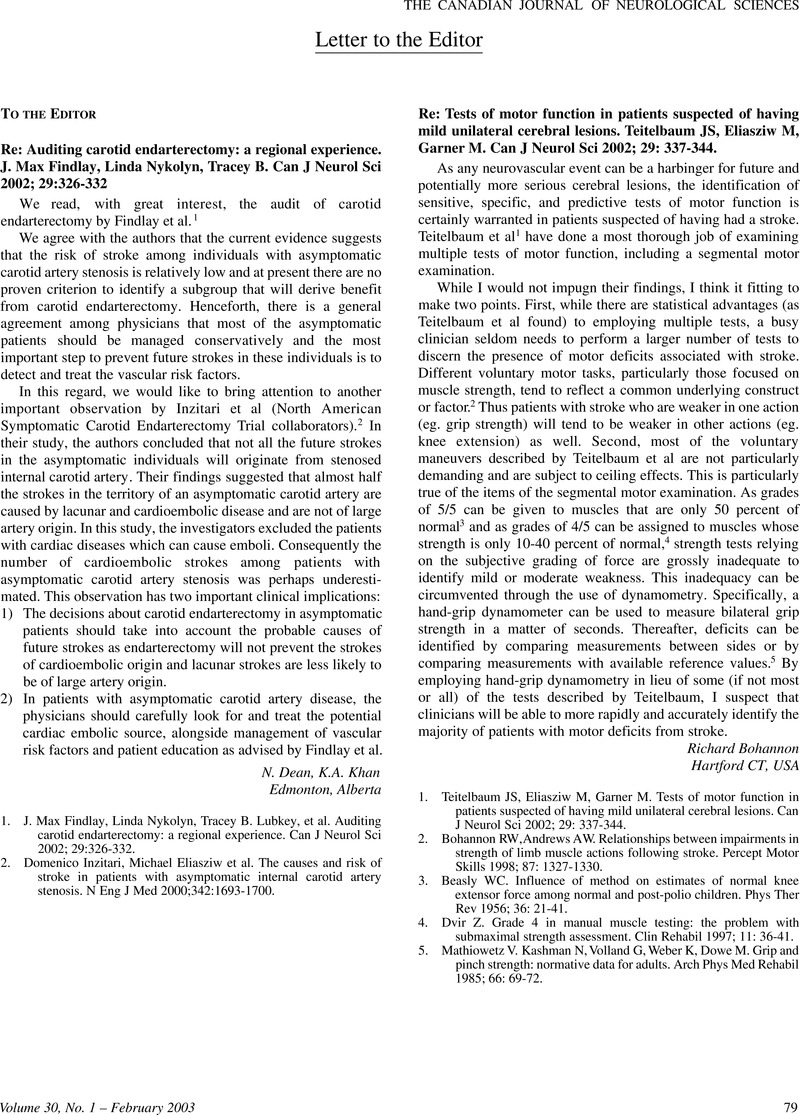No CrossRef data available.
Article contents
Letter to the Editor
Published online by Cambridge University Press: 02 December 2014
Abstract
An abstract is not available for this content so a preview has been provided. As you have access to this content, a full PDF is available via the ‘Save PDF’ action button.

- Type
- Letter
- Information
- Copyright
- Copyright © The Canadian Journal of Neurological 2003
References
1.
Teitelbaum, JS, Eliasziw, M, Garner, M.
Tests of motor function in patients suspected of having mild unilateral cerebral lesions. Can J Neurol Sci
2002; 29: 337–344.CrossRefGoogle ScholarPubMed
2.
Bohannon, RW, Andrews, AW.
Relationships between impairments in strength of limb muscle actions following stroke. Percept Motor Skills
1998; 87: 1327–1330.CrossRefGoogle ScholarPubMed
3.
Beasly, WC.
Influence of method on estimates of normal knee extensor force among normal and post-polio children. Phys Ther Rev
1956; 36: 21–41.CrossRefGoogle Scholar
4.
Dvir, Z.
Grade 4 in manual muscle testing: the problem with submaximal strength assessment. Clin Rehabil
1997; 11: 36–41.Google Scholar
5.
Domenico, Inzitari, Michael, Eliasziw
et al.
The causes and risk of stroke in patients with asymptomatic internal carotid artery stenosis. N Eng J Med
2000;342:1693–1700.Google Scholar
6.
Mathiowetz, V.
Kashman, N, Volland, G, Weber, K, Dowe, M.
Grip and pinch strength: normative data for adults. Arch Phys Med Rehabil
1985; 66: 69–72.Google Scholar
7.
Max Findlay, J., Nykolyn, Linda, Lubkey, Tracey B., et al.
Auditing carotid endarterectomy: a regional experience. Can J Neurol Sci
2002; 29:326–332.CrossRefGoogle Scholar


